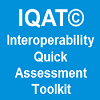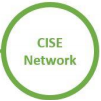
Covered by:
|
Simplify processes and use digital channels whenever appropriate for the delivery of European public services, to respond promptly and with high quality to users’ requests and reduce the administrative burden on public administrations, businesses and citizens.Supporting Solutions |
| Legal initiative | Description | Recommendations |
|
Status: In force and transposed
|
This Directve aims to make public sector websites and mobile applications more accessible, and to harmonise varying standards within the EU, reducing barriers for developers of accessibility-related products and services. This will allow EU citizens, particularly those with a disability, to gain better access to public services, an underlying principle of the EU’s Digital Agenda for Europe and eGovernment Action Plan 2016-2020. |
Recommendation 17 |
|
Status: In force |
The single digital gateway will facilitate online access to the information, key administrative procedures and assistance and problem-solving services that citizens and businesses may wish to contact if they encounter problems when exercising their internal market rights while living in or doing business in another EU country. | Recommendation 17 |
|
Status: In force and transposed |
This Directive aims to remove barriers to trade in services in the EU, by: - simplifying administrative procedures for service providers; - enhancing the rights of consumers and businesses receiving services; and - fostering cooperation among EU countries. |
Recommendation 17 |
| Standards and Specifications | Relevant Recommendations | Associated Solutions |
|
Name: BregDCAT-AP -RoR Description: The Registry of Registers is a solution dedicated to an application profile of DCAT-AP for base registries, namely, BRegDCAT-AP, aiming to provide a standard data model / specification for base registries access and interconnection. |
Recommendation 17 | 
|
| Concrete example/good practice | Summary |
|
|
Two main initiatives characterize Norway’s efforts to foster cooperation and coordination among public administrations. The first one is the revision (in 2019 and 2020) of the architecture principles for public sector digitalization which goal is to foster the public sector’s interoperability and interactions with businesses. The implementation of the architecture principles is mandatory for public administrations at the national level and recommended for those at the sub-national level (e.g. municipalities). The second initiative is the publication of the Norwegian Interoperability Framework (NIF) in 2018. It is a national transposition of the European Interoperability Framework (EIF) that aims to help public administrations in defining, developing and managing digital public services, including cross-sectorial ones. Norway’s experience highlighted the importance of stakeholder involvement and participation, and thus of collaboration, to improve interoperability. |
| Solution | Description | Associated Recommendations |

CIRCABC |
CIRCABC (Communication and Information Resource Centre for Administrations, Businesses and Citizens) is an open-source, web-based application which enables geographically spread collaborative groups to share information and resources in private workspaces. | Recommendation 17 |

CISE node |
The CISE Node manages the communication protocol among participants, including the security, access control to the information and the reliability aspects. The CISE Node is a common block for all the partners connected to the network, but the management is not centralised. It uses the CISE Data and Service Models to ensure technical and semantic interoperability among the CISE stakeholders. | Recommendation 17 |

Context Broker |
CEF Context Broker is an API that can integrate data from multiple systems, creating a holistic view of information. By providing the layer that describes each type of data, the Context Broker makes it possible to create an interface that makes it easy for anyone to view and interpret big data. Using the Context Broker, organisations can monitor their metrics in real time through live updates. You can share the context information you choose with third parties, enabling process improvements and innovation across the whole data value chain. |
Recommendation 17 |

eArchiving |
eArchiving provides the core specifications, software, training and knowledge to help data creators, software developers and digital archives tackle the challenge of short, medium and long-term data management and reuse in a sustainable, authentic, cost-efficient, manageable and interoperable way.
|
Recommendation 17 |

eCertis |
e-Certis is a free online tool mapping documents requested in public procurement procedures across borders. The system identifies and links certificates necessary as proof of compliance with tender criteria in various areas of administrative verification (e.g. tax, social security obligations, criminal records, etc.). This helps bring clarity to the cross-border bidding process. Information provided by e-Certis is inserted by National public entities in charge and regularly updated. The e-Certis service is linked with the European Single Procurement Document (ESPD), which is a single self-declaration form of a bidder's eligibility in public procurement. e-Certis and the ESPD significantly reduce the effort needed for submission of a tender offer and facilitate bidding across borders. |
Recommendation 17 |

eDelivery |
The eDelivery Building Block helps public administrations to exchange data and documents via AS4 Access Points, based on the AS4 messaging protocol. This allows different parties to exchange electronic data and documents across sectors and borders through a secure eDelivery message exchange network. By connecting to an AS4 Access Point, a public administration can exchange electronic data and documents with any organisation connected to another Access Point in the network. The eDelivery Building Block also helps upgrade exisiting solutions so they can connect to eDelivery messaging networks through an Access Point. | Recommendation 17 |

eID |
The eID Building Block allows public administrations and private service providers to easily extend the use of their online services to citizens from other Member States, in line with the eIDAS Regulation. | Recommendation 17 |

eInvoicing |
he CEF eInvoicing Building Block aims to promote the successful uptake of electronic invoicing in Europe, respecting the European standard on electronic invoicing and Directive 2014/55/EU on electronic invoicing in public procurement. This is relevant for both public and private entities established in the EU, as well as in participating EEA countries. |
Recommendation 17 |

eSignature |
The CEF eSignature Building Block allows public administrations, businesses, and citizens to electronically sign any document, anywhere in Europe, at any time, in line with the eIDAS Regulation for e-signatures, e-seals and related services offered by Trust Service Providers. | Recommendation 17 |

ESPD exchange data model |
European Single Procurement Document (ESPD) is a self-declaration of the businesses' financial status, abilities and suitability for a public procurement procedure. It is available in all EU languages and used as a preliminary evidence of fulfilment of the conditions required in public procurement procedures across the EU. Thanks to the ESPD, the tenderers no longer have to provide full documentary evidence and different forms previously used in the EU procurement, which means a significant simplification of access to cross-border tendering opportunities. From October 2018 onwards the ESPD shall be provided exclusively in an electronic form. | Recommendation 17 |
|
European Union
|
The European Union Location Framework (EULF) Blueprint is a framework of recommendations and related guidance for publishing and using location information and applying interoperability principles in digital government. The EULF Blueprint was initially developed through the EULF project in the ISA programme. The content has been updated extensively through the European Location Interoperability Solutions for e-Government (ELISE) project, which is part of the ISA2 programme. | Recommendation 17 |

Interoperability Quick Assessment Toolkit (IQAT) |
The objective of the IQAT© is to allow Solution Owners to assess the Potential Interoperability of their software solutions supporting Public Services. The toolkit is based on a specific conceptual model for the Interoperability assessment of software solutions, which relies on four interoperability areas: Interoperability (IOP) Governance, Software Architecture, |
Recommendation 17 |

LEOS software components (under EUPL) |
LEOS is designed to help those involved in draſting legislation, which is usually part of a complex process, by facilitating efficient online collaboration. Comments, suggestions, version control, co-edition, everything is there. Regarding the structure, that is where we aim to be as restrictive as possible and this is not because we are conservative, but because this helps the draſters follow the rules and avoid mistakes. Content is stored in an XML format, currently Akoma Ntoso V3. | Recommendation 17 |

Re3gistry |
Re3gistry provides a central access point that allows labels and descriptions for reference codes to be easily looked up by humans, or retrieved by machines. It supports organisations in managing and updating reference codes in a consistent way, so that all versions of a code remain traceable and properly documented, and do not change or disappear over time. | Recommendation 17 |

Ref2link package (under EUPL) |
Ref2Link automates the detection of references and generates hyperlinks based on dynamic and customisable rules. You can use Ref2Link as a standalone tool or as a building block in IT systems such as LEOS. Ref2Link supports out-of-the-box multilingual detection of EU legal instruments. It enforces the European Legislation Identifier and European Case Law Identifier standards and other references if needed. National public administrations may adapt the default detection rules to meet their own specific requirements. The code will be made available under the free European Union Public Licence (EUPL). |
Recommendation 17 |

Registry of Registers |
The Registry of Registers is a solution dedicated to an application profile of DCAT-AP for base registries, namely, BRegDCAT-AP, aiming to provide a standard data model / specification for base registries access and interconnection. | Recommendation 17 |

Service model |
The CISE Network is a complex open computer network interfacing several EU countries, specifically, in the maritime data context. This network connects CISE nodes and legacy systems thought a special component called "The CISE Adaptor". This document is a guideline to the CISE Service Model and to the software development of the CISE Adaptors. The intention is to provide a complete, precise and quick start documentation to be used fundamentally as a reference guide by the CISE Software Developers community of the EU Member States. Specifically, the objective is to make more easy the development, test, implementation and validation of CISE Adaptors. |
Recommendation 17 |
|
IMAPS solution v1.2 |
IMAPS is a user-friendly online questionnaire, designed as a self-assessment tool to assist public service owners to evaluate key interoperability aspects of their digital public service. Not only can IMAPS be used to assess the interoperability of any public service – from open data portals, and e-voting platforms, to public procurement services, and much more – it is applicable to services at all levels of government (international, national, regional and local). |
Recommendation 17 |
|
OIMAPS solution v1.00 |
This is the Beta version of the Organisational Interoperability Maturity Assessment of a Public Service (LIMAPS) survey. This Beta version of the OIMAPS Survey has been released on the 21 April 2020 on Joinup. It is a user-friendly online questionnaire, designed as a self-assessment tool to assist public service owners to evaluate key organisational interoperability aspects of their digital public service. |
Recommendation 17 |
|
OpenPM² |
PM² is a Project Management Methodology developed and supported by the European Commission. Its purpose is to enable project teams to manage their projects effectively and deliver solutions and benefits to their organisations and stakeholders. PM² is a light and easy to implement methodology suitable for any type of project. PM² has been custom developed to fit the specific needs, culture and constraints of EU Institutions, but also incorporates elements from globally accepted best practices, standards and methodologies. | Recommendation 17 |





